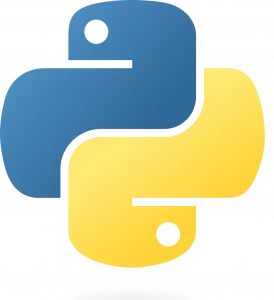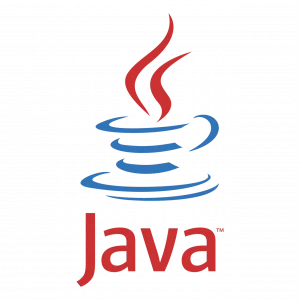Table of Contents
ToggleIntroduction
Artificial Intelligence (AI) has transformed the way we work today. Thus, it is crucial for organizations to maintain AI-driven solutions and understand them. Whether you’re interested in data analysis or machine learning models, having a solid grasp of the right AI language can make a huge difference. In this article, we will explore the top languages for you to master AI and machine learning to handle complex challenges in the evolving digital world.

Don't miss out on your chance to work with the best!
Apply for top job opportunities today!
What is AI/ML?
In simple words, AI or Artificial Intelligence is nothing but software that imitates human cognitive abilities to perform complex tasks. ML or Machine Learning is a subset of AI that mainly focuses on training algorithms with data sets to create machine-learning models.
Related Post: Top 10 AI Tools To Boost Your Business in 2023
Real-life Use cases of AI
Nowadays, every individual uses AI-powered devices in their daily routine. It has become an integral part of our lives. AI helps us to carry out our tasks most efficiently. There are so many AI-powered apps but the following are just a few that are essential in our everyday life.
- AI is able to do X-rays to check for cancerous growth, which is a big progress in healthcare.
- It has a huge significance in the business to analyze big data sets.
- It also ensures speedy deliverables, capable of forecasting delays and tracking shipments in supply chains.
Now, let’s dive right into the top languages to master AI and machine learning.
Top Languages for You to Master AI and Machine Learning
Python

Despite being released before the rise of Artificial Intelligence (AI) and Machine learning (ML), it’s the most favorable programming language in AI/ML development. This is why it takes the first position in the list of top languages for AI and machine learning. Python’s powerful data analysis tools and constant support in the field of big data have skyrocketed its popularity in AI development. Its AI-specific framework is another key factor that places it as the top AI/ML language. Most importantly, Python is the easiest language to learn.
Julia

Julia is a relatively new language in our list, developed in the year 2012 by MIT. It is remarkable for its exceptional speed and computational capabilities. Its script-like syntax makes it easy for beginners to learn and understand. What sets Julia apart from the rest of the languages on the list is its unique strength in translating algorithms from research papers into code. Doing so minimizes the chances of model risk and promotes safety. Plus, its machine learning libraries are growing in numbers. Scikitlearn.jl, Flux, TensorFlow.jl, Mocha.jl, to name a few. If you’re looking for a high-performance numerical computing language for AI applications, Julia is the ideal choice for you.
R

R is developed by statisticians to carry out statistical computing tasks. However, its potential to effortlessly handle large complex data made it widely popular in data visualization, statistical software development, and data analysis. R is a preferred tool for machine learning tasks, which requires extensive data analysis. Plus, it comes with the packages CARAT for classification and regression training, and randomForest for generating decision trees. Besides, its interactive environment makes it an excellent choice for rapid prototyping.
Java

Java, widely used for mobile app development, holds great significance in AI/ML. Considering the huge integration of AI features in mobile apps, Java use cases have perfectly aligned with AI trends. On top of that, it supports many libraries such as Weka for machine-learning algorithms and predictive models. Similarly, Massive Online Analysis for data mining software. Additionally, Java’s virtual machine allows developers to create and run code consistently across all supported platforms along with the customization tools. Furthermore, its common use cases are in data analysis, natural language processing (NLP), and deep learning.
Lisp

Lisp is one of the 2nd oldest languages on our list, which is primarily used for scientific research in theorem, natural languages, and AI. Initially, it was used in practical mathematical notation but its advanced features including automatic garbage collection, quick prototyping, and dynamic object creation have made it a go-to choice for developers in AI/ML. Moreover, it excels in processing symbolic information and symbolic expression. Thus, Symbolic AI solves all the logical thought-related issues and knowledge representation in AI.
Scala

Scala is a general-purpose programming language that supports both object-oriented and functional programming introduced in the year 2004. It is a compact version of Java designed to address issues that exist in Java. Its source code runs smoothly on Java Virtual Machine (JVM), which makes it a valuable choice for AI-intensive Android applications. In addition, Apache Spark MLib & ML library offers sets of tools for classification, clustering, and supervised learning algorithms as well as modules to construct data pipelines.
What are the Benefits of AI/ML in the Future?
With its exponential global market rise, AI is highly likely to expand businesses from $136.6 billion to $1.8 trillion by the year 2030 per Grand View Research (GVR). The following are a few benefits of AI/ML for the future:
- With the quick analysis of vast data, businesses can produce actionable insights.
- When labor costs decrease, there will be a high ROI.
- Businesses can tailor customer satisfaction and better experience to meet individual customer needs
Final Verdict
Take control of your career and land your dream job!
Sign up and start applying to the best opportunities!

FAQs
Python’s simplicity and English-like syntax makes it easy to learn. Besides, it provides extensive documentation, language guides, and large active community support.
No, despite being the most preferred language in web development, it is not popular for AI/ML. Though there’s growing interest in using JavaScript in the data science field, it is mainly due to its rising popularity of the language rather than suitability.
Yes, you learn Python to get started with AI/ML. But if you’re goal is to gain hands-on experience you need to sharpen your skills in Python.
Python provides extensive libraries along with built-in support for neural networks and machine learning. Apart from that, it also supports cross-language compatible and flexible programming.

